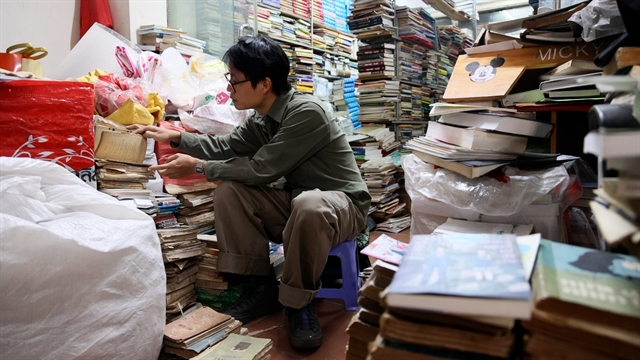 Life & Style
Life & Style

Mai Xá is a small village, about 20km from Đông Hà city of Quảng Trị province, with a landscape typical of a rural village with a tranquil temple and peaceful river habour.
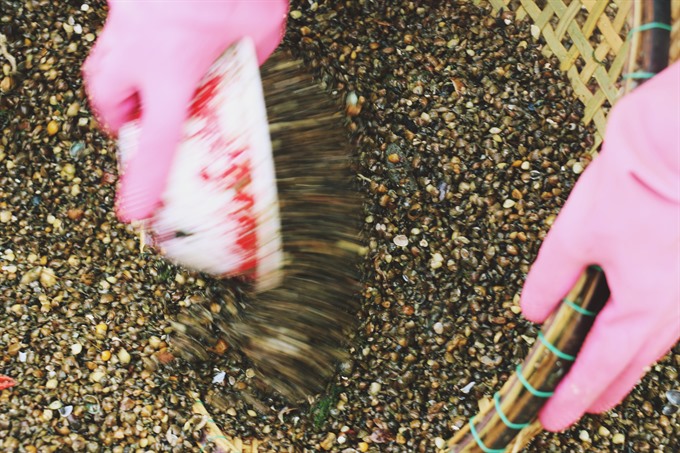 |
| Tiny treasures: Chắt chắt belongs to mussel family but of much smaller. |
Mai Xá is a small village, about 20km from Đông Hà city of Quảng Trị Province, with a landscape typical of a rural village with a tranquil temple and peaceful river habour.
The village, well-known for wartime-heroism, is also home to bún chắt chắt, also known as bún hến (noodle soup with tiny mussels), recognised as one of the top 100 original dishes of Việt Nam by the Việt Nam Record Association.
Chắt chắt belongs to the mussel family but is much smaller. Bún chắt chắt comprises of rice noodles served with broth made by boiling mussels and fresh herbs. They are either mixed or served separately according to the diners’ wishes.
“There is no official documents showing when this dish was first made but it has been about for more than four hundred years according to locals,” said the 58-year-old culture officer of Mai Xá Village, Trương Quang Thanh.
“That was around the time when people first settled down here, things were hard and it was the mussel that helped feed them,” Thanh added.
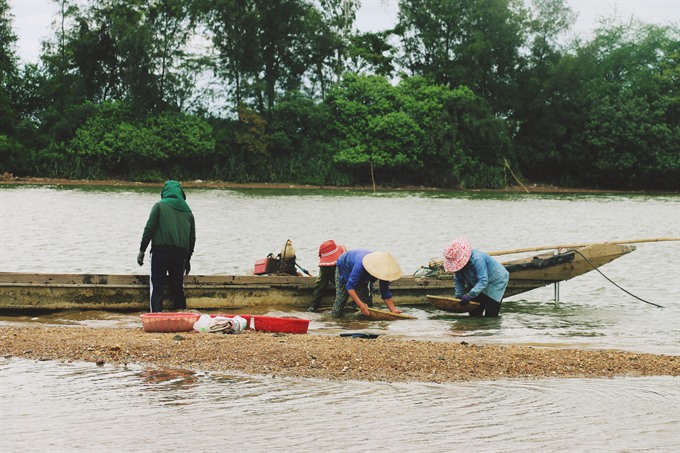 |
| Grinding: In the afternoon, local people gather in the Hiếu river bank to clean their mussels. |
People found these mussels tasty and a good source of food for domestic use and for sale.
“Bún chắt chắt is almost the staple of locals here. The Hiếu River is an abundant source for mussels,” said Thanh.
Currently, there are about 20 households in Mai Xá Village that catch tiny mussels to earn their living.
They leave home at 6am and return after 1pm.
“Chắt chắt is available all year round. This job is easy, not requiring any skill. Even children or old people can do,” said Võ Thị Lan, 41, a native of Mai Xá Village.
Lan and her husband catch tiny mussels almost everyday. They normally fill three to five buckets of mussels a day, weighing up to 300kg, with 20kg of mussel meat.
“I started doing this job when I was 22 years old,” Lan added, saying she earns about VNĐ400,000 (US$18) a day.
Typically, Lan and other locals who catch mussels begin their day at 6am, heading for the Hiếu River, only few hundreds metres from their village.
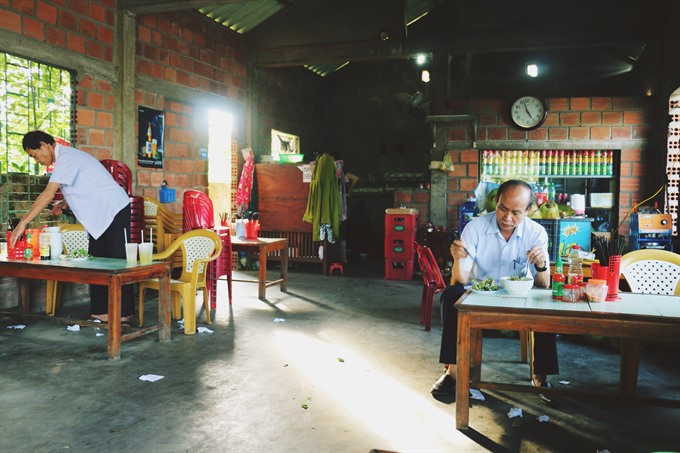 |
| Unpretentious fare: Bùi Thị Hường’s humble eatery, which has been open for nearly 20 years, offers both noodles with mussels and rice with mussels. |
Locals row boats around the river, catch mussels and then return to the river bank to clean them. They would place the mussels in baskets with small holes inside and swirling them around so sand and dust is removed.
In the afternoon, locals boil the mussels and sell them to restaurants.
“Boiling mussels may sound easy but it requires skills. One needs to use an adequate amount of water, just slightly above the mussels, otherwise they will not open and we won’t be able to take out the meat,” said Lan.
After receiving the broth and mussels from the catchers, restaurants prepare them for the next morning so their customers can enjoy a fresh meal.
“The more mussels, the better the noodles are and the smaller the mussels, the better they are,” said Bùi Thị Hường, 58, who opened a restaurant serving noodle soup with tiny mussels in 1999.
Hường’s humble eatery offers both mussel noodles and rice with mussels. On a busy day, she can sell 100 bowls a day, each costing only VNĐ10,000 (about 40 cents).
“The demand is higher in summer rather than in winter, as this dish is especially suitable for hot weather,” said Hường.
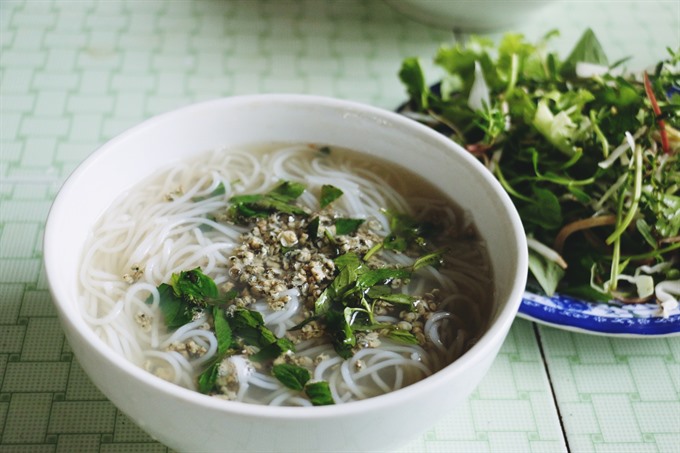 |
| Time-honoured: Bún chắt chắt (noodles with tiny mussel) is native to Mai Xá village, Quảng Trị province. The dish was first made hundreds of years ago. —VNS Photos Hồng Vân |
A bowl of bún chắt chắt may look like simple rice noodles with mussels and coriander, yet it is the quality that counts. The broth is sweet and has the distinct, rich flavour of mussels.
A mixture of salt, fresh ginger and chilli goes splendidly with the dish.
An important philosophy of Vietnamese eating is the balance of hot and cold foods, as in the hot and cold elements and energy of the food, not the temperature.
Mussles (and other seafood and fish, shrimp and crab) is in the cold category; therefore it should be accompanied by hot elements like chilli and ginger for balance, making the dish especially popular during the long, hot summer.
Besides noodles, locals also enjoy water spinach broth with mussels. “The dish would be much better if the water spinach was cut into small slices,” said Thanh.
“In the old days, when locals could not afford rice for the whole family, they had this dish and roasted corn instead of rice. Now this has become our local speciality,” added Thanh. — VNS